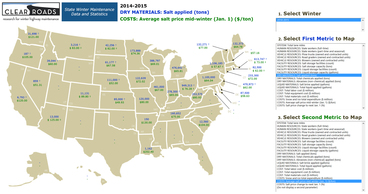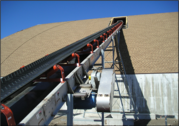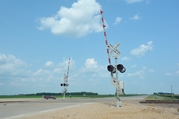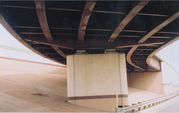
Maintenance & Operations — The Clear Roads Transportation Pooled Fund Project (clearroads.org), a national winter maintenance research consortium led by MnDOT, has published a national survey on the annual winter maintenance operations of state DOTs. It includes nearly 50 data points related to equipment, materials and costs.
Available at clearroads.org/winter-maintenance-survey as a Microsoft Excel-based spreadsheet, the results can be examined, analyzed and parsed as needed, at no cost. Beyond the raw data, the spreadsheet includes calculated statistics and an interactive map for plotting key metrics. Data from the 2015-2016 winter season was recently added.
“Data trends by geographic region and over time let us make more informed operations decisions," said Tom Peters, research and training engineer, MnDOT Maintenance Operations. "We can also draw on this information to communicate with management, elected officials and the public about how MnDOT’s winter operations fit in a national context.”
Click here to see what other winter maintenance initiatives are underway at Clear Roads.
 Maintenance & Operations — In collaboration with the Federal Highway Administration, Clear Roads has developed a guide to 20 best management practices (BMPs) for procuring, storing and applying road salt to help agencies meet their performance goals at the lowest possible cost. Offering vendors flexibility in delivery times and maintaining enough salt storage capacity to avoid the need for last-minute orders are among these BMPs. The guide describes each practice on a single page, front and back, which can be separated from the manual and shared with relevant personnel.
Clear Roads Project 14-10
|
 Maintenance & Operations — Global Positioning System and automatic vehicle location (GPS/AVL) technology turns winter maintenance vehicles into mobile data collection systems that can save big dollars. However, putting it in place can be complicated. Agencies need to evaluate a range of hardware and communications options for transferring information collected to a data management system, and decide which data to collect and how to use it most effectively.
In this project, researchers developed a guide that describes currently available GPS/AVL options and their capabilities, as well as positive and negative experiences agencies have had with them. The guide also reviews key issues to consider when implementing GPS/AVL equipment and developing policies for data access and storage.
Clear Roads Project 14-01
|
 Maintenance & Operations — This new guidebook, produced by the Minnesota Local Road Research Board, summarizes common snow and ice control tools and serves as an introduction to the field of winter maintenance for operators and managers. It will help new staff understand the following topics: snow and ice control strategies; snow plows and equipment; winter maintenance materials; winter maintenance technologies; and winter maintenance policies and best practices.
#2016RIC11
|
 Traffic & Safety — Previous MnDOT research showed that rumble strips with a sine-wave shape produced sounds that were quieter to bystanders than Minnesota's current design, while still loud enough within the vehicle to alert the driver. Building on this research, investigators tested several sinusoidal designs with careful measurement of noise levels inside and outside vehicles as they passed over the strips.
All of the tested rumble strips performed better than MnDOT’s current design, providing a less intrusive pitch. The design featuring one 14-inch-wide strip with rumbles 1/16-inch to 1/2-inch deep was most effective in alerting drivers. Using the results of this project and from additional testing at MnROAD, MnDOT will decide whether to deploy the sinusoidal rumble strip only in noise-sensitive areas, on all centerlines, or on all centerlines and edge lines. The agency must also choose between a single- or split-rumble design.
Technical Summary 2016-23
|
 Traffic & Safety — Upgrading a passive railroad crossing marked only by signage to an active crossing with flashing lights and lowered gates can cost up to $500,000. MnDOT aims to target limited upgrade funds to the most dangerous of the state’s 2,500-plus passive crossings but needed a more effective model for ranking risk.
Investigators identified 10 key risk factors for crashes based on a study of crashes that occurred at railroad crossings from 2004 through 2013. They found that 8 percent of the crossings exhibited seven or more of the factors, providing a rationale for MnDOT and its partners to prioritize safety improvements and consolidate redundant crossings, with a goal of zero deaths at railroad crossings in Minnesota.
Technical Summary 2016-25
|
 Bridges & Structures — MnDOT’s 20,000 bridges require inspections every two years. Special attention, however, needs to be paid to those bridges considered fracture-critical, where the failure of a single steel element that is in tension could cause the bridge to collapse. These bridges require yearly and more intensive inspections by the department’s 600 busy inspectors. By applying new national guidelines to conduct a more precise analysis of bridge designs, MnDOT can safely remove some bridges from the fracture-critical list, allowing inspectors to focus attention where it is really needed. The new design analysis can identify existing redundancies or encourage simple, inexpensive retrofitting in place of more extensive repairs.
Technical Summary 2016-22
|
Bridges & Structures — In conducting load ratings and evaluating shear on bridges in Minnesota, MnDOT generally relies on specifications produced by the American Association of State Highway and Transportation Officials (AASHTO). However, these requirements have changed over the years, and some concrete bridges designed according to earlier specifications rate poorly for shear by newer standards, despite showing no signs of distress.
Upon investigation, MnDOT found that shear forces for some bridges are not as high as predicted by current AASHTO standards. Researchers recommended more refined methods for rating bridges that are currently rated low for shear, and developed a screening tool to identify them. MnDOT will use these recommendations to re-evaluate such bridges and is reviewing results for inclusion in its load rating manual. These measures will help the agency ensure the safety of Minnesota bridges, make cost-effective maintenance decisions and accurately process overload vehicles for heavy trucks.
Technical Summary 2016-32
|